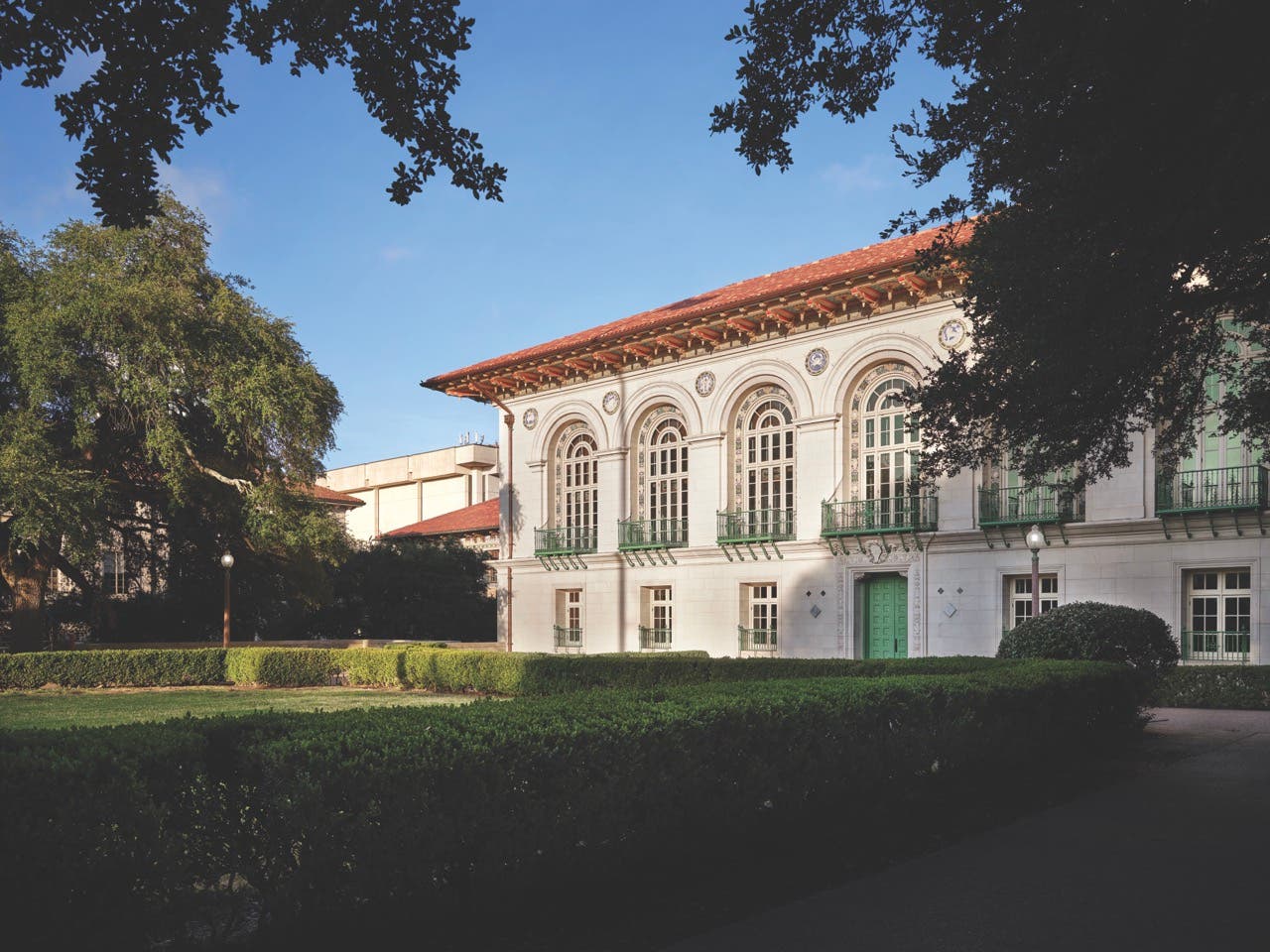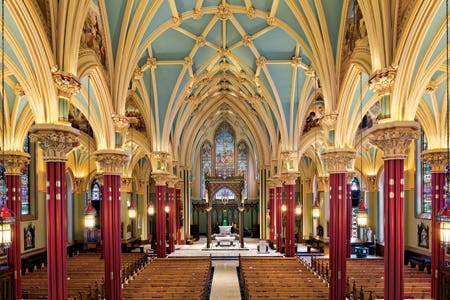
Religious Buildings
Canning Studios’ Cathedral of St. Patrick, Norwich, CT

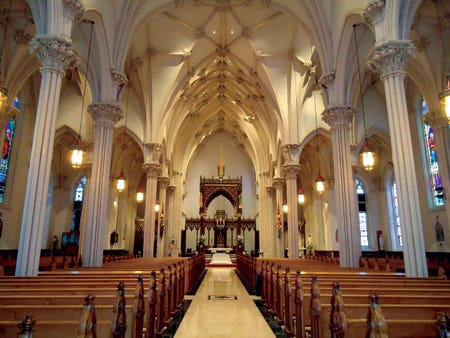
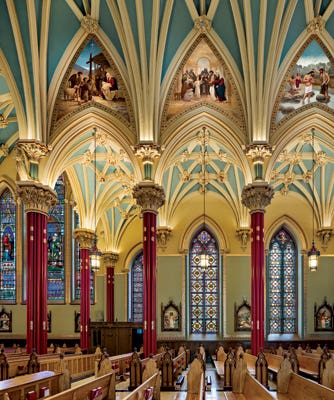
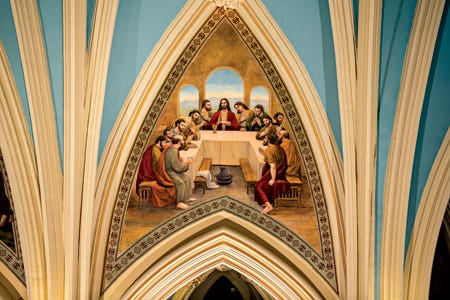
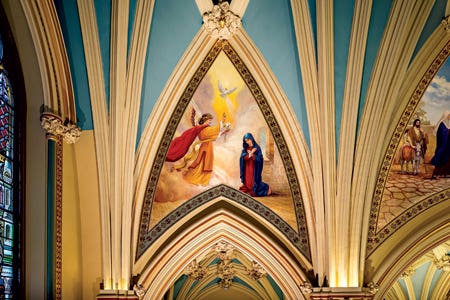

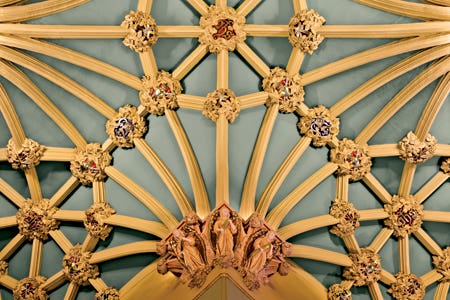
By Martha McDonald
This year’s Bulfinch winners, as announced recently by the New England chapter of the ICAA (Institute of Classical Architecture & Art), include a number of outstanding designers and projects. In the craftsmanship/artisanship category, John Canning Studios, Cheshire, CT, was cited was cited for its decorative painting work at the Cathedral of St. Patrick in Norwich, CT.
This represents the second year in a row that the studio has been cited for outstanding work in a religious setting. In 2012, it was recognized by the ICAA’s inaugural Stamford White Award for its work at the 1870 Basilica of Saint John the Evangelist Church in Stamford, CT.
This year’s award originated when Bishop Michael R. Cote asked John Canning Studios to create a new ecclesiastic scheme for the 1897 Gothic cathedral. It was originally designed by James Murphy (1834-1907) who was known for his numerous Roman Catholic churches. Repainted over the years, the sanctuary had become a solid beige color.
Being preservationists, the artisans at John Canning Studios suggested that they first conduct a limited historic paint study to determine the original color palette and perhaps uncover an original design or motif that would be historically unique to St. Patrick’s, and could be incorporated into the new scheme. Bishop Cote became enthused with Canning’s approach that with restoration and design he could link the past to the present, and encouraged the studio to expand the paint study. He then commissioned the studio to create 22 new murals to replace the ones that were lost.
Black-and-white archival photographs of the interior taken shortly after the church was completed clearly showed painted murals on the upper walls of the nave over the arches. Upon examination of these areas, no evidence of these murals could be found. For some inexplicable reason, the murals had been removed and are now lost. Canning conservators did reveal decoratively painted borders that had framed the murals.
“What started as a request for a new scheme developed into a restoration project replete with the reinstatement of 22 new murals,” says John Canning. “The idea was through restoration to ‘link the past to the present, and the present to the future,’ which was the philosophy of Richard Moe, the past president of the National Trust for Historic Preservation.”
The Canning team got to work developing the new murals.
They were commissioned to design and paint art murals depicting the life, passion, death and resurrection of Jesus. The bishop, pastor, building committee and the congregation helped develop the content, as well as the style, composition and detail. The new murals, each measuring 12 ft. 10 in. wide by 16 ft. 8 in. tall were painted in the Canning studio on canvas by various artists under the direction of Peter Wirkijowski, the studio’s Director of Art. These were completed over a nine-month period, from July 2012 to March 2013.
The Bishop also commissioned a separate mural to simulate stained glass. It is positioned behind the altar and measures 38 ft. tall by 26 ft. wide.
After the murals were completed, the Canning artists moved to the cathedral and constructed scaffolding in order to install them. At that time, they also completed other decorative painting and gilding in the church. Canning Studios also designed and cast new plaster frames for the 14 bas-relief Stations of the Cross sculptures to replace those that had been removed over the years. These were done in the Gothic style, then wood grained, gilded and polychromed.
All of the work in the 13,000-sq.ft. cathedral was completed and the scaffolding was dismantled in April of this year. “The return of the character, solemnity, harmony and repose of the scared place has been restored,” says Canning.






